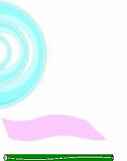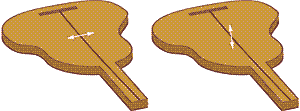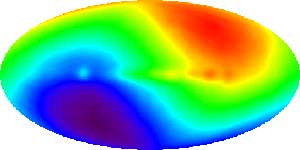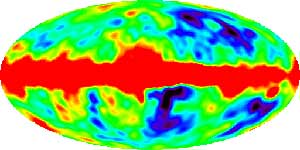![]()
![]()
The ancient Greeks considered what we now call energy (they called it fire) as one of the basic elements of the universe. The alchemists adopted the Greek view of four distinguishable elements (earth, water, air and fire) composing all earthly materials. Even two millennia later in 1789 when Antoine Lavoisier argued for a better definition of element, he continued to believe that light (Lumiere) and heat (Calorique) were material substances.
In Lavoisier's time cannons were manufactured by boring out a shaft from a metal casting, a process releasing much heat. It was commonly thought that latent heat in the metal was liberated depending on the amount of material ground away. But in 1789 Count Rumford, (birth named Benjamin Thompson, 1753-1814) while supervising boring cannon, noted the heat produced depended on the friction rather than the volume of removed metal. (Read his original published report) He proposed that heat could not be a material substance but must rather be a form of motion. (Interesting trivia: Marie Anne Paulze, married to and science partner with Lavoisier for 22 years until his execution, 11 years later had a much less successful marriage with Rumford.)
A century earlier Isaac Newton had used material particles to explain properties of light such as color, refraction and interference. While several of his contemporaries, notably Robert Hooke (1635-1703) and Christian Huygens (1629-1695), suggested explanations which presumed light was composed of waves, most scientists of the 18th Century continued to believe that light was composed of particles of matter. But with doubt being cast upon the assumption that heat was composed of material, the particle model of light also was rejected and replaced with Thomas Young's (1773-1829) view that waves better explained all the known phenomena of light. Young also introduced the term energy to the quantity mv2 and to make work done (which he defined as force x distance) proportional to energy. It took another decade of experiments by Augustin Fresnel (1788-1827) to convince the world that light is waves of energy.

Material can be disturbed by a wave in several distinct directions. For example in sound, the material can be alternately compressed and rarified in a disturbance that expands outwards from the source. The wave travels the same direction as the disturbance. This is called a compression wave.
On the surface of a liquid (e.g., the ocean) or sheet (e.g., a flag) the material is displaced perpendicular to the surface. For example the surface of the ocean goes up and down as the wave crosses the surface. This is called a transverse wave.
Cohesive materials may be twisted (e.g., a lawn hose or a wire) with neighboring parts of the material receiving the twist a very short time later. This is called a torsional wave.
Some materials can wave simultaneously in multiple modes (e.g., earth quakes). Some transverse waves have an additional
feature. While the surface of the ocean is forced to wave up
and down, a violin string can vibrate in various directions.
The string might vibrate parallel to the surface of the violin or it
might be caused to vibrate so the string gets closer then further
from the violin. Actual vibrations of the violin string could
be any combination of possible directions. But if a transverse
wave vibrates in only one of multiple possible planes (say
just parallel to the violin), then the wave is said to be polarized.
Some transverse waves have an additional
feature. While the surface of the ocean is forced to wave up
and down, a violin string can vibrate in various directions.
The string might vibrate parallel to the surface of the violin or it
might be caused to vibrate so the string gets closer then further
from the violin. Actual vibrations of the violin string could
be any combination of possible directions. But if a transverse
wave vibrates in only one of multiple possible planes (say
just parallel to the violin), then the wave is said to be polarized.
 James Clerk Maxwell (1831-1879, at right) collected and developed mathematical
equations to make Michael Faraday's qualitative insights about
electricity and magnetism more useful. Comparing the strength
of electric interactions with that of magnetic interactions yielded a
ratio with the units of velocity
(3 x 108 meters/second). Maxwell
presumed this to be the speed at which the effect of a changing
electric or magnetic field would spread away from the source.
Maxwell noted,
James Clerk Maxwell (1831-1879, at right) collected and developed mathematical
equations to make Michael Faraday's qualitative insights about
electricity and magnetism more useful. Comparing the strength
of electric interactions with that of magnetic interactions yielded a
ratio with the units of velocity
(3 x 108 meters/second). Maxwell
presumed this to be the speed at which the effect of a changing
electric or magnetic field would spread away from the source.
Maxwell noted, This velocity is so nearly that of light, that
it seems we have strong reason to conclude that light itself (including radiant heat, and
other radiations, if any) is an
electromagnetic disturbance in the form of waves propagated though
the electromagnetic field according to electromagnetic
laws.
Maxwell improved on the agreement between these
two speeds by experimentally comparing the attractions of two
electric currents flowing in coils of wire (magnetic interaction),
and the attraction or repulsion between two metal plates which have
each received a charge of electricity (electric interaction).
Maxwell's electromagnetic theory, which accounted for all the then
known phenomena of magnetism and electricity, was published in a
semi-popular form in the Philosophical Magazine in 1861 and
1862. According to Maxwell's theory, electromagnetic waves are
transverse and can be polarized.
 In 1669 a transparent crystal from Iceland was sent Erasmus Bartholin (1625-1698) who noted that objects seen through it appeared double. A century later Thomas Young suggested that two light rays polarized at right angles to each other must be refracted at different angles. It is currently understood that such
materials as
In 1669 a transparent crystal from Iceland was sent Erasmus Bartholin (1625-1698) who noted that objects seen through it appeared double. A century later Thomas Young suggested that two light rays polarized at right angles to each other must be refracted at different angles. It is currently understood that such
materials as Iceland Spar
(sample at left) have electric charge distributions in their crystal lattices which slow light waves of polarity aligned with one dimension by a different amount than light waves with perpendicular polarity. As a result half of the
light is refracted at one angle while the remainder of the light is
refracted in a different direction. Notice light from the text is split different directions by the Iceland Spar making duplicate new
and speak.
This provides evidence that light must be a transverse wave.
William Nicol (1768-1851) found that two crystals of Iceland Spar attached together could be used to measure the angle of polarization of compounds. But such devices were very expensive. Edwin Land, (1909-1991) when a Harvard freshman, conceived the idea that a comparable polarizer might be made by aligning tiny crystals (iodoquinine sulphate) embedded in transparent plastic, an idea which he patented in 1929. Light of one polarity is absorbed while that perpendicular passes through. Such film made by Land's Polaroid Corporation can be obtained in Polaroid sun glasses. (Land and his Polaroid Corporation later invented cameras that produce self-developing photographs and ultra-sonic range finders used for self-focusing cameras. Land trailed only Thomas Edison in the number of patents; Land received 535.)
We shall use Land's polaroid filters to investigate polarized light.
Scotch tape
 In 1963 P. J. E. Peebles and R. H. Dicke had calculated that if a Big Bang had occurred as some astronomers had proposed, residual energy must remain. They were preparing an experiment to look for any such evidence when A. Penzias and R. Wilson accidentally discovered a background of 2 mm long electromagnetic waves, called microwaves. (See Experiment II-10 for details.) The universe has a uniform glow of microwaves in all directions as shown by the 360° image of the sky flattened at right. This is direct evidence that billions of years ago the universe was very hot, but as happens to any expanding gas, the temperature has cooled and is now below 3K.
In 1963 P. J. E. Peebles and R. H. Dicke had calculated that if a Big Bang had occurred as some astronomers had proposed, residual energy must remain. They were preparing an experiment to look for any such evidence when A. Penzias and R. Wilson accidentally discovered a background of 2 mm long electromagnetic waves, called microwaves. (See Experiment II-10 for details.) The universe has a uniform glow of microwaves in all directions as shown by the 360° image of the sky flattened at right. This is direct evidence that billions of years ago the universe was very hot, but as happens to any expanding gas, the temperature has cooled and is now below 3K.
 In February 2003 a team using a satellite called the Wilkinson Microwave Anisotropy Probe (WMAP) announced the first detailed full-sky map of the cosmic microwave background. A detailed analysis of the radiation reveals systematic variations of about one part in a thousand caused by the earth's motion through the Milky Way galaxy. The small differences have been amplified here so slightly warmer microwaves are shown redder in the direction the earth is moving and 180° away in the direction from whence the earth came microwaves appear a cooler blue.
In February 2003 a team using a satellite called the Wilkinson Microwave Anisotropy Probe (WMAP) announced the first detailed full-sky map of the cosmic microwave background. A detailed analysis of the radiation reveals systematic variations of about one part in a thousand caused by the earth's motion through the Milky Way galaxy. The small differences have been amplified here so slightly warmer microwaves are shown redder in the direction the earth is moving and 180° away in the direction from whence the earth came microwaves appear a cooler blue.
 In the third view, the variation in the microwaves due to the motion of the earth have been systematically eliminated. Our relatively close Milky Way galaxy still contributes a warmer band across the sky. But most of the rest of the light originated from the early universe shortly after the hot plasma had cooled enough to become transparent, releasing the light. Here with the variations are magnified by about a million more than in the first image, the universe has a globular pattern.
In the third view, the variation in the microwaves due to the motion of the earth have been systematically eliminated. Our relatively close Milky Way galaxy still contributes a warmer band across the sky. But most of the rest of the light originated from the early universe shortly after the hot plasma had cooled enough to become transparent, releasing the light. Here with the variations are magnified by about a million more than in the first image, the universe has a globular pattern.
 By summing the cosmic microwave background at several different wavelengths, the warmth of the Milky Way has been removed leaving a detailed view of the tiny granular variations that were present in the early universe. (Recall that while light travels fast, it still takes some travel time. Light coming the greatest distance carries information from long ago.) The distant granules visible in this image presumably eventually coalesced forming galaxies and stars similar to those now visible closer. Analysis of the WMAP detected light from the distance past gives the following information about the universe:
By summing the cosmic microwave background at several different wavelengths, the warmth of the Milky Way has been removed leaving a detailed view of the tiny granular variations that were present in the early universe. (Recall that while light travels fast, it still takes some travel time. Light coming the greatest distance carries information from long ago.) The distant granules visible in this image presumably eventually coalesced forming galaxies and stars similar to those now visible closer. Analysis of the WMAP detected light from the distance past gives the following information about the universe:
This information has largely been confirmed by other independent measurements of data from quasars and distant type Ia supernovae. But there should be more information embedded in the cosmic microwave background.
Because the microwaves are electromagnetic radiation, they can be polarized like the visible light investigated in this experiment. Just like visible light becomes polarized by scattering, scattering also causes the cosmic microwave background radiation to be polarized.
In addition, gravity is believed capable of polarizing light. If there were large gravity waves as expected of the early universe, it is believed they could create a distinct polarization of the cosmic microwave background with a tensor curl.
Several projects are now underway to search for the effects of early gravitational waves on the polarization of the cosmic microwave background.
The Life of James Clerk Maxwell(described by Richard Feynman as the greatest physicist of the 19th century) 1882, digitized and made available by James C. Rautio, Sonnet Software, Inc, 1997. Also Rautio's Highlights From
The Life Of James Clerk Maxwell